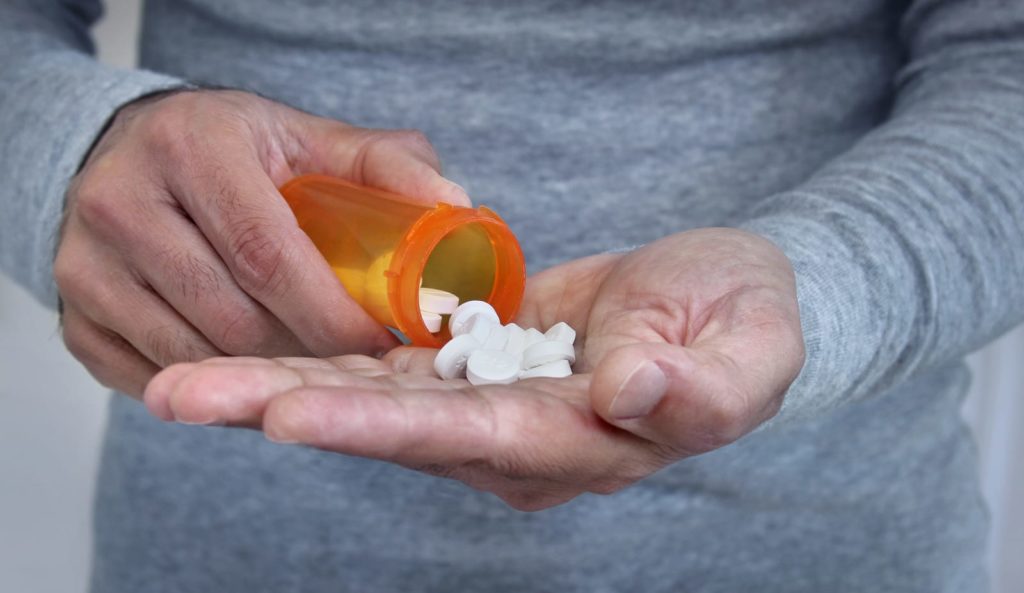
Mind-Altering Prescription Medications
Each class of mind-altering prescription medication has its characteristic effects. Like illegal opioid drugs, prescription opioid painkillers create an intense form of pleasure called euphoria, reduce the body’s pain sensitivity and slow down the normal activity rate in the central nervous system. Common examples of these medications include oxycodone (Percodan, OxyContin), hydrocodone (Lortab, Vicodin), codeine and morphine. Prescription stimulants produce a euphoria-like effect, increase alertness and speed up the normal activity rate in the central nervous system. Common examples of these medications include amphetamine (Adderall, Dexedrine) and methylphenidate (Ritalin, Concerta). Sedative-hypnotics promote sleepiness, relieve anxiety, produce a euphoric effect (in some cases) and slow down central nervous system function. Common examples of these medications include benzodiazepines (e.g., Valium, Ativan and Xanax), barbiturates (e.g., Phenobarbital) and the sleep medications eszopiclone (Lunesta) and zolpidem (Ambien).
Prescription Medication Abuse
A prescription medication is abused whenever it’s taken in ways not intended by a prescribing doctor, taken in excessive amounts or taken by someone who doesn’t have a prescription. The reasons for engaging in this form of drug abuse vary from person to person and may include a desire to get “high,” a desire to gain a stronger treatment effect from a medication and (especially in the case of prescription stimulants) a desire to enhance physical or mental performance. Unfortunately, many people perceive prescription medications as safer alternatives to illegal/illicit drugs. However, all of the commonly abused medications pose very real threats to human health when used excessively, taken in unintended ways or used without a prescription. Potential outcomes include the development of physical substance dependence, the development of outright drug addiction (which is synonymous with physical dependence in many cases), the onset of a potentially lethal drug overdose and the development of long-term health problems related to substance use.
Which Medications?
In the study scheduled for publication in Drug and Alcohol Dependence, the Skidmore College researchers sent an online survey to 33 percent of all the students attending the school; 303 students responded and turned in completed survey information. The survey questions addressed a range of issues related to the subject of prescription medication abuse, including each student’s level of involvement in prescription abuse, each student’s reasons for getting involved or not getting involved and each student user’s preferred medication target. The researchers concluded that slightly more than one-third (36.8 percent) of all the study participants were involved in the abuse of at least one class of prescription medication. Almost 73 percent of those involved in prescription abuse consumed a stimulant medication, while 48 percent consumed an opioid painkiller. Roughly 40 percent of the students involved in prescription abuse consumed a sedative-hypnotic medication. When the researchers looked at the specific medications abused within each medication class, they found that the most common targets for prescription stimulant abuse were the ADHD medications Adderall (an amphetamine-based product) and Ritalin (a methylphenidate-based product). The most common targets for prescription opioid abuse were hydrocodone-based Vicodin, oxycodone-based OxyContin and a codeine product that also contained the nonprescription painkiller acetaminophen. Xanax (a branded form of the benzodiazepine alprazolam) was the most common target for prescription sedative-hypnotic abuse. The researchers concluded that the sophomores, juniors and seniors in their survey group were substantially more likely to participate in prescription medication abuse than the freshmen in their group. They also concluded that several motivations helped explain the lack of involvement in prescription abuse in the majority of the survey respondents. Examples of these motivations included general disinterest, concerns about medication-related physical impairment and concerns about medication-related mental impairment. The study’s authors believe their work helps clarify the picture of prescription medication abuse on college campuses and indicates the fairly common nature of this abuse. It’s worth noting that the rate of abuse recorded by the authors substantially outpaces the rate of prescription medication abuse in the general U.S. population.

